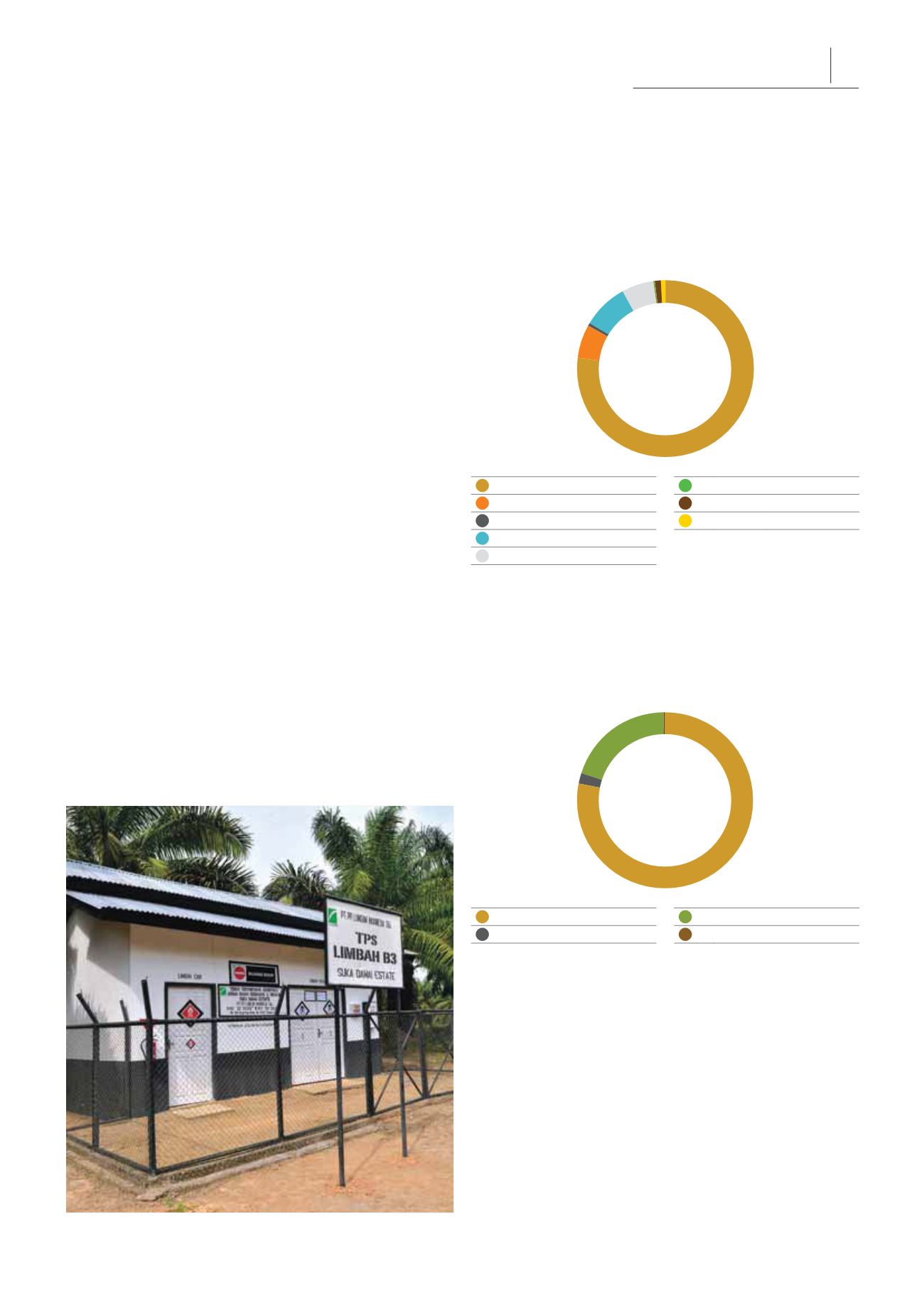
45
INDOFOOD AGRI RESOURCES LTD
SUSTAINABILITY REPORT 2014
REDUCING AND
RECYCLING WASTE
NON-HAZARDOUS WASTE
We are committed to reducing waste in all our operations. All
the milling by
-
products, such as EFB, fibres, shells and POME
are re
-
used as compost or feedstock for boilers. We have
designed collapsible pouch packaging for our popular edible
oils products as a measure to reduce landfill requirement by
the disposed packaging. IndoAgri does not currently reclaim
packaging materials.
Colour
-
coded bins are provided throughout the estates, mills
and refineries to separate organic, non
-
organic and hazardous
waste for proper handling and disposal. As there is a low
volume of general waste in the corporate offices, we currently
do not record the quantity of non
-
hazardous waste collected
in these locations.
HAZARDOUS WASTE
All hazardous waste generated from our operation is collected
and stored in transfer stations on our estates, mills and
refineries, as required by Indonesian regulations. Hazardous
waste is stored for not more than 90 days before they are
collected and recycled by licensed disposal companies.
Medical waste, such as used needles and expired drugs,
from our clinics are collected separately and sent to licensed
disposal companies for incineration.
On average, each mill produces around 1.94 tonnes of
hazardous waste annually, of which more than 70% are from
used lubricants. Each refinery produces an average of 6,947
tonnes of hazardous waste annually. More than 70% of our
hazardous waste is spent earth, a solid waste material from the
bleaching process in refineries. The spent earth is re
-
used as
raw material in the production of cement and bleaching
-
earth.
Hazardous Waste from Our Mills 2014
77.1% Lubricants
6.2% Battery
0.7% Electric Lamp
8.2% Oil Filter
5.9% Chemical Pail
0.2% Paint Can
1.1% Rags
0.6% Others
Note 1: Data from RSPO and/or PROPER audited, certified mills (77%).
Note 2: Others consist of clinical waste, contaminated gloves and used cartridge.
Hazardous Waste from Our Refineries 2014
78.3% Spent Earth
1.7 % Sludge Waste
19.8% Fly Bottom Ash
0.2% Others
Note 1: Data from 4 refineries (80%).
Note 2: Others consist of lubricant, used nickel catalyst, battery, laboratory waste,
and carbon waste.


